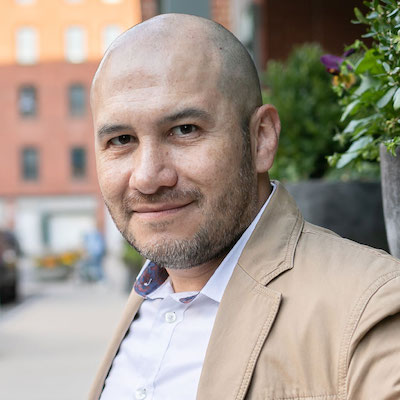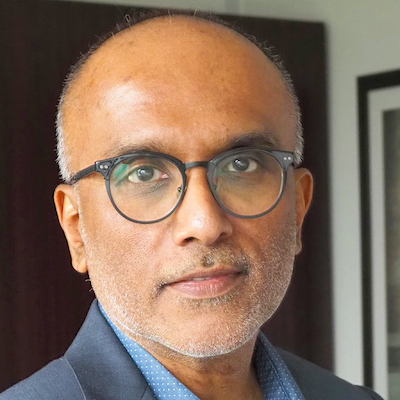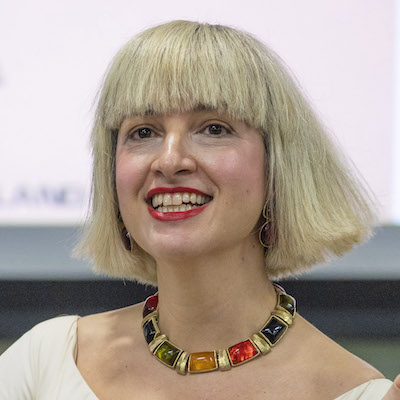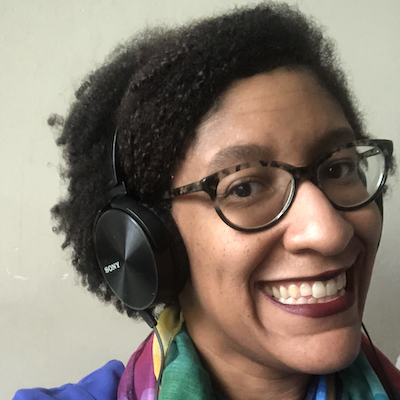Journalism goes Web3
In 2022 journalism will “pivot” to Web3. Since the rise of digital media, we’ve seen news organizations realign priorities and resources towards potential new revenue streams, such as mobile, social, and video, with mixed results. This year we’ll see many ramp up their Web3 efforts. It makes sense. After all, Web3 offers new ways of monetizing archives and IP, creating patronage, rewarding readers, and funding startups. All things journalism could use. But it won’t be completely without peril.
In fact, the move already started, and some of those efforts have been well covered here at the Nieman Lab. But we’re yet to see major news organizations make significant strides into Web3, or new journalistic endeavors native to Web3 breakthrough. I suspect a year from now, it’ll be different.
In a way, it’s rather surprising that we haven’t seen efforts by the AFP, Reuters, VII Agency, or Magnum. The AP dipped its toes this year releasing a series on Binance Marketplace. But these archives own outright treasures, primed for the NFT market. And while 18-year-olds with a bootlegged Photoshop and hastily drawn anthropomorphic (mostly adorable) animals are minting millions from their art, the most treasured images in recent history haven’t been made available to a market of collectors with a seemingly endless appetite for NFTs and unlimited resources to invest in them. Understandably, there’s hesitation. The business model of these archives is to license these images over and over. But as the NFT market matures, its numbers tower over the potential licensing opportunity.
NFTs are the low-hanging fruit. And historic photographs won’t be the only journalistic product on the market. As New York Times columnist Kevin Roose showed earlier this year, an article or column can become a valuable NFT. And so, a year from now, it’s not hard to imagine a thriving market of 1/1 editions of historic front pages, magazine covers (Rolling Stone recently launched one in partnership with the Bored Ape Yacht Club), articles, interviews, derivative rights and probably a lot more we haven’t even thought of. Add to that on-demand minting by anyone who’s been written about in the media who may want to own the NFT of their 15 minutes of fame/infamy. Media organizations will even be able to decide if they want to sell the copyright to a story and its derivatives, or simply issue limited digital representations.
It is also easy to envision DAOs (decentralized autonomous organizations) having a meaningful role in journalism, just as they do outside of it. The ability to organize around a common goal or set of principles, and to raise funds from members in return for a financial interest in their success, can be extremely powerful. Imagine, for instance, if your local newspaper subscription came in the form of a token which not only granted access to its content, but also ownership, and any number of rewards. You’d have a lot more people invested in the success of these organizations. Generally speaking, that would be a great thing.
If the unsuccessful Constitution DAO experiment taught us anything, it is just how quickly financial interest can align to generate significant funding around a shared ideology. Those tokens in turn create a financial incentive for the community to succeed, and have proven to be a powerful gel to a community of mostly anonymous people coming together — predominantly using Web 2.0’s social media tools — to raise and deploy funds towards a goal. And as we’ve learned in 2021 from the rallies in meme-coins and meme stocks, the goal itself doesn’t have to be reasonable or even fully formed, it just needs to be shared.
There are tremendous opportunities for journalistic and media organizations at large in this new world. There are also reasons for caution. Just as these tools can be a meaningful revenue stream — and a new form of patronage that changes for the better the relationship between media organizations and their audiences — there are also reasons for caution. There is a certain tribal element to Web3 communities. “Hodl” culture and “aping-in” are good examples of it. The ability for individuals to organize around a common cause will give way to journalistic outlets, organized not around the core principles of truth, but rather around an ideology or common goal. And that will only increase the already polarizIng trends we see in media today.
And so, in 2022, it’s not hard to imagine that a Robert Capa 1/1 NFT will be sold at Christie’s for 8 figures, as will a front page of The New York Times. It’s not hard to imagine that many in the next generation of challengers to established digital media players like BuzzFeed and Vox Media will be DAOs. Or that subscriptions will be mostly tokenized, giving audiences a stake in the success of the media organizations that they support. It’s also not hard to imagine that the next OAN or Fox News will be a very well-funded, ideologically driven, and community-owned enterprise that can create ever more closed-off feedback loops than what we have today in our fractured media market.
But overall, the good outweighs the bad, and 2022 will be an extraordinary year for those who learn how to harbor the power of the upcoming revolution.
Daniel Eilemberg is president of content at Exile Content Studio.

In 2022 journalism will “pivot” to Web3. Since the rise of digital media, we’ve seen news organizations realign priorities and resources towards potential new revenue streams, such as mobile, social, and video, with mixed results. This year we’ll see many ramp up their Web3 efforts. It makes sense. After all, Web3 offers new ways of monetizing archives and IP, creating patronage, rewarding readers, and funding startups. All things journalism could use. But it won’t be completely without peril.
In fact, the move already started, and some of those efforts have been well covered here at the Nieman Lab. But we’re yet to see major news organizations make significant strides into Web3, or new journalistic endeavors native to Web3 breakthrough. I suspect a year from now, it’ll be different.
In a way, it’s rather surprising that we haven’t seen efforts by the AFP, Reuters, VII Agency, or Magnum. The AP dipped its toes this year releasing a series on Binance Marketplace. But these archives own outright treasures, primed for the NFT market. And while 18-year-olds with a bootlegged Photoshop and hastily drawn anthropomorphic (mostly adorable) animals are minting millions from their art, the most treasured images in recent history haven’t been made available to a market of collectors with a seemingly endless appetite for NFTs and unlimited resources to invest in them. Understandably, there’s hesitation. The business model of these archives is to license these images over and over. But as the NFT market matures, its numbers tower over the potential licensing opportunity.
NFTs are the low-hanging fruit. And historic photographs won’t be the only journalistic product on the market. As New York Times columnist Kevin Roose showed earlier this year, an article or column can become a valuable NFT. And so, a year from now, it’s not hard to imagine a thriving market of 1/1 editions of historic front pages, magazine covers (Rolling Stone recently launched one in partnership with the Bored Ape Yacht Club), articles, interviews, derivative rights and probably a lot more we haven’t even thought of. Add to that on-demand minting by anyone who’s been written about in the media who may want to own the NFT of their 15 minutes of fame/infamy. Media organizations will even be able to decide if they want to sell the copyright to a story and its derivatives, or simply issue limited digital representations.
It is also easy to envision DAOs (decentralized autonomous organizations) having a meaningful role in journalism, just as they do outside of it. The ability to organize around a common goal or set of principles, and to raise funds from members in return for a financial interest in their success, can be extremely powerful. Imagine, for instance, if your local newspaper subscription came in the form of a token which not only granted access to its content, but also ownership, and any number of rewards. You’d have a lot more people invested in the success of these organizations. Generally speaking, that would be a great thing.
If the unsuccessful Constitution DAO experiment taught us anything, it is just how quickly financial interest can align to generate significant funding around a shared ideology. Those tokens in turn create a financial incentive for the community to succeed, and have proven to be a powerful gel to a community of mostly anonymous people coming together — predominantly using Web 2.0’s social media tools — to raise and deploy funds towards a goal. And as we’ve learned in 2021 from the rallies in meme-coins and meme stocks, the goal itself doesn’t have to be reasonable or even fully formed, it just needs to be shared.
There are tremendous opportunities for journalistic and media organizations at large in this new world. There are also reasons for caution. Just as these tools can be a meaningful revenue stream — and a new form of patronage that changes for the better the relationship between media organizations and their audiences — there are also reasons for caution. There is a certain tribal element to Web3 communities. “Hodl” culture and “aping-in” are good examples of it. The ability for individuals to organize around a common cause will give way to journalistic outlets, organized not around the core principles of truth, but rather around an ideology or common goal. And that will only increase the already polarizIng trends we see in media today.
And so, in 2022, it’s not hard to imagine that a Robert Capa 1/1 NFT will be sold at Christie’s for 8 figures, as will a front page of The New York Times. It’s not hard to imagine that many in the next generation of challengers to established digital media players like BuzzFeed and Vox Media will be DAOs. Or that subscriptions will be mostly tokenized, giving audiences a stake in the success of the media organizations that they support. It’s also not hard to imagine that the next OAN or Fox News will be a very well-funded, ideologically driven, and community-owned enterprise that can create ever more closed-off feedback loops than what we have today in our fractured media market.
But overall, the good outweighs the bad, and 2022 will be an extraordinary year for those who learn how to harbor the power of the upcoming revolution.
Daniel Eilemberg is president of content at Exile Content Studio.
Sarah Stonbely

Richard Tofel

Chicas Poderosas

j. Siguru Wahutu

Jessica Clark

Matt Karolian

Don Day

Candace Amos

Andrew Freedman

Burt Herman

Kathleen Searles Rebekah Trumble

Izabella Kaminska

Tom Trewinnard

Jonas Kaiser

Michael W. Wagner

Doris Truong

Nik Usher

A.J. Bauer

Sarah Marshall

Joe Amditis

Jody Brannon

Wilson Liévano

James Green

Cherian George

Millie Tran

Joni Deutsch

Joshua P. Darr

Sam Guzik

Whitney Phillips

Matt DeRienzo

Anita Varma

Christina Shih

John Davidow

Jesenia De Moya Correa

Cindy Royal

Jesse Holcomb

Matthew Pressman

Shannon McGregor Carolyn Schmitt

Ariel Zirulnick

Chase Davis

Paul Cheung

Victor Pickard

Rachel Glickhouse

Tony Baranowski

Kendra Pierre-Louis

Simon Galperin

Stephen Fowler

Catalina Albeanu

Jim Friedlich

Amara Aguilar

Tamar Charney

Julia Angwin

Juleyka Lantigua

Alice Antheaume

Ståle Grut

Zizi Papacharissi

Moreno Cruz Osório

Brian Moritz

Errin Haines

Mandy Jenkins

Francesco Zaffarano

Mary Walter-Brown

Robert Hernandez

David Skok

David Cohn

Meena Thiruvengadam

Laxmi Parthasarathy

Shalabh Upadhyay

Rasmus Kleis Nielsen

Jennifer Coogan

Kristen Jeffers

Megan McCarthy

Raney Aronson-Rath

S. Mitra Kalita

Larry Ryckman

Amy Schmitz Weiss

Gonzalo del Peon

Melody Kramer

Jennifer Brandel

Anika Anand

Cristina Tardáguila

Parker Molloy

Simon Allison

Gordon Crovitz

Natalia Viana

AX Mina

Christoph Mergerson

James Salanga

Julia Munslow

Kerri Hoffman

Eric Nuzum

Gabe Schneider

Daniel Eilemberg

Joanne McNeil

Mario García

Stefanie Murray

Kristen Muller

Anthony Nadler

Mike Rispoli

Joy Mayer
